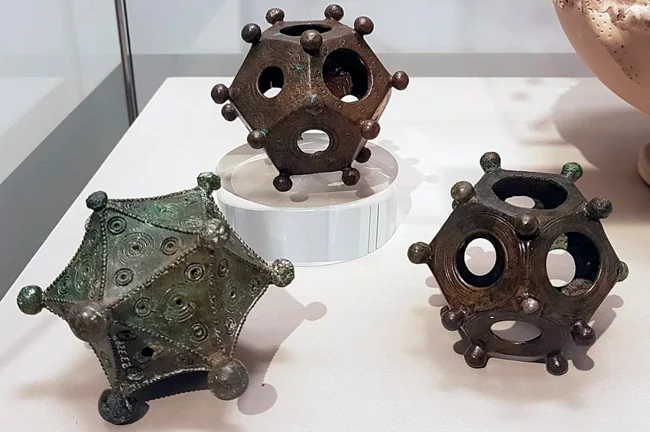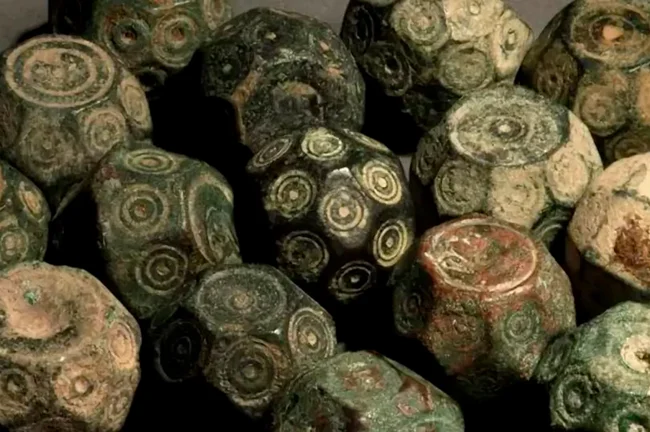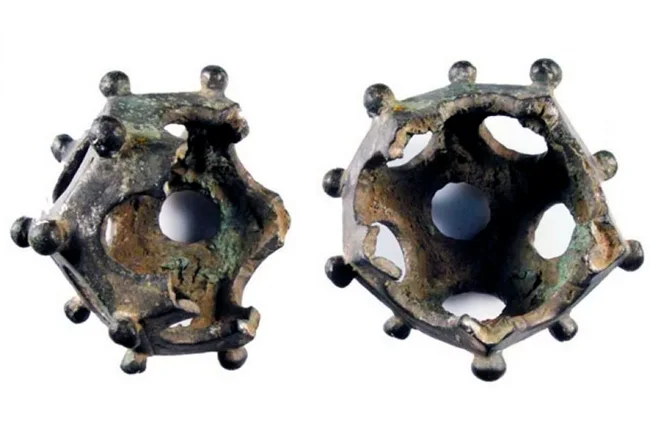Why was the Roman dodecahedron needed in ancient times and how was it used (3 photos)
Humanity is striving to learn more and more about its past. Ancient cities are being excavated, chronicles are being studied, images and signs are being deciphered. 
But sometimes discoveries happen that baffle historians. And even years later it is not possible to understand their purpose and meaning.
The Roman dodecahedron became such a historical puzzle.
No one can explain: what is it, and why did ancient people create such complex products for them?
Hundreds of finds
One discovery in archeology means nothing. The item may be a random part of something larger, so its purpose is unclear.
But when things of the same type begin to be found en masse, this already indicates that they were in common use and had some kind of independent meaning.
To date, almost one and a half hundred strange objects of the same type have been found on the territory of the former Roman Empire.
Metal dodecahedrons, mostly made of bronze, are hollow spherical objects 4-10 cm in diameter, consisting of 12 pentagonal equal planes. Each plane has a circle, some of them have a large hole, others do not or have a smaller one. At the intersection of the edges there are small bronze balls or knobs. All corners on the faces are smoothed.
Dodecahedrons are found in different countries: England, Switzerland, southern Germany, etc. That is, it was not a local product or souvenir; dodecahedrons were clearly common in different provinces of the Roman Empire. In an earlier era, on the same territory, similar dodecahedrons, but made of stone, were found in abundance. Lead dodecahedrons are occasionally found.
Products for that era are complex enough that they were produced without meaning or purpose.
What is this?
No mention was found in the documents of those eras about what such objects could be used for. The dodecahedron is officially called “UGRO”, that is, Unidentified Gallo-Roman Object - an unidentified Gallo-Roman object. 
For several generations now, researchers and history buffs have been trying to understand what the inhabitants of the Roman provinces did with the dodecaders.
There are many versions put forward, each more original than the other.
But all of them are not confirmed or raise even more questions.
Why was the dodecahedron needed?
What hypotheses exist today?
Dice? But why then is there no mention of such games? Why holes?
Toys? For that era, bronze balls were an expensive pleasure. The geographical spread of finds is also against this version. Some of the dodecahedrons were found in the tomb of an adult Roman woman. It is unlikely that they would put a toy in the sarcophagus.
Candlestick? This version arose due to the fact that wax was found in one of the dodecaders. But then what is the meaning of several different-sized holes, bumps and smoothed edges? The candlestick can be made into a much simpler or much more elegant shape.
Because of the 12 planes, a version appeared that this is a “calendar” according to the signs of the zodiac. Some researchers even call dodecahedrons pocket Stonehenges. Appeared for astronomical calculations. But then at least some mention of the principles of calculation with them should have been preserved in the astrological treatises of the era.
A primitive ancient computer or adding machine. Supporters of this version suggest that there could be some kind of algorithm that made it possible to perform complex calculations using the dodecahedron, for example in geodetic measurements. But why then can’t modern mathematicians formulate a pattern?
A device for a gunner during combat based on the principle of a range finder. But why then the bumps and rounded edges? In addition, for the calculations to be correct, the devices must be unified or at least close in size. Dodecahedrons are all different in size. The discovery of a dodecahedron in the tomb of a Roman woman is also confusing. 
Religious object? But which one? The dodecahedrons do not intersect in any way with any of the dodecahedrons known on the territory of the Roman Empire.
Some kind of symbol? For example, the sign of the five elements? But the holes are unclear.
The personification of the idea of some closed group? For example, it is known that the Pythagoreans in Ancient Greece considered the dodecahedron shape to be ideal and sacred to them. No, for a closed group there is too much dispersion in the geography of finds.
Model of the ancient ideas about the Universe. In the works of Plato there is a description of the celestial sphere as a ball sewn from 12 pieces of leather. But why then should people in different places depict this object in bronze in large numbers and store them? It is difficult to imagine that on the territory of the Roman Empire there were so many thinkers who always needed a pocket model of the Universe at hand for scientific research.
None of the hypotheses are confirmed. Roman dodecahedrons remain “unidentified objects” for historical science.
